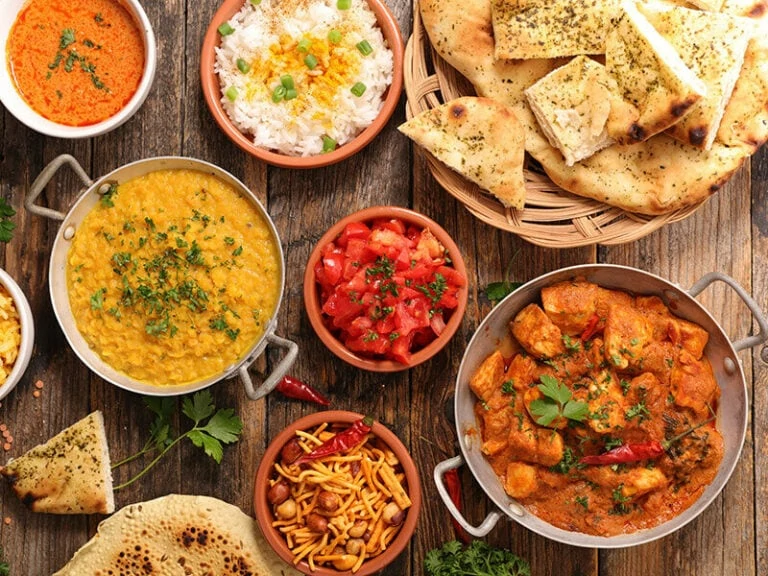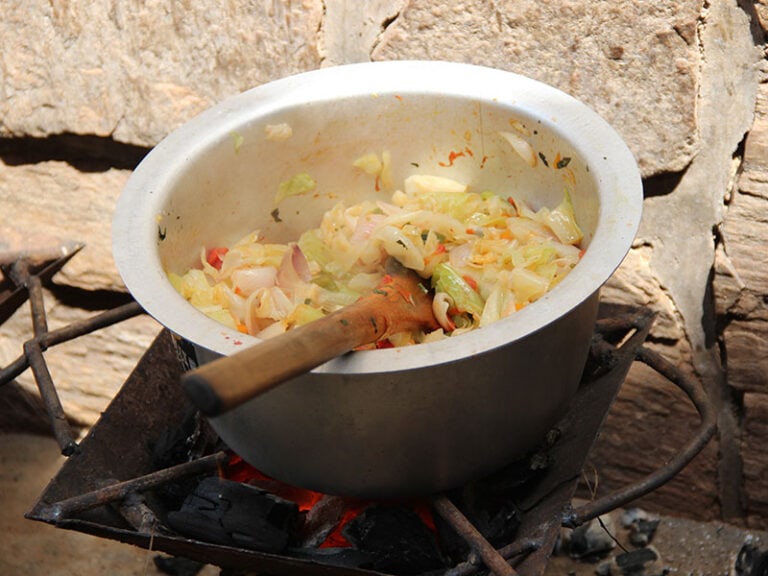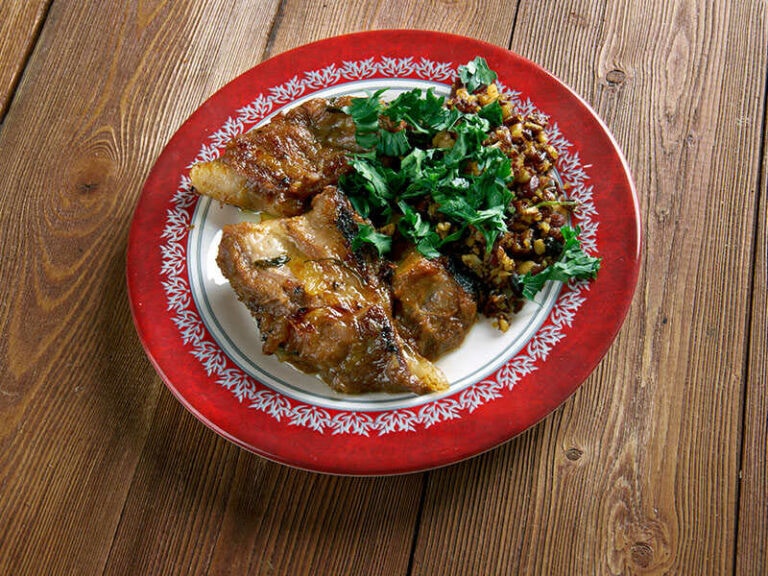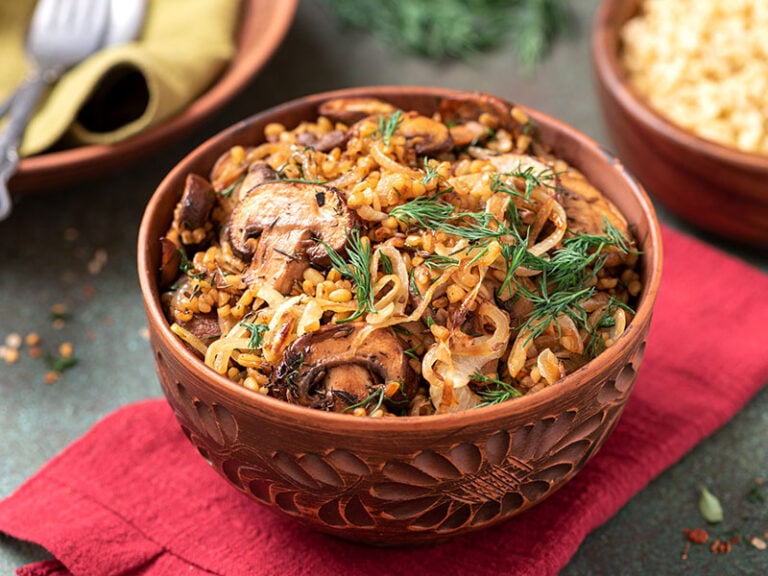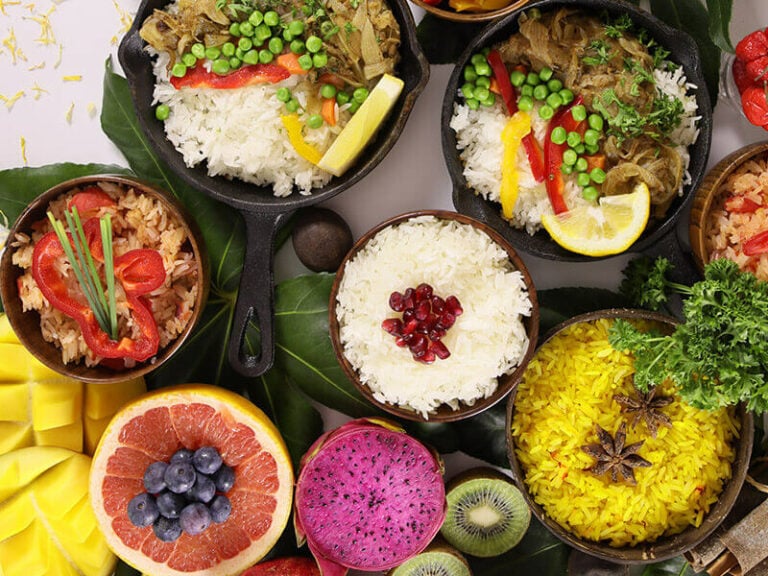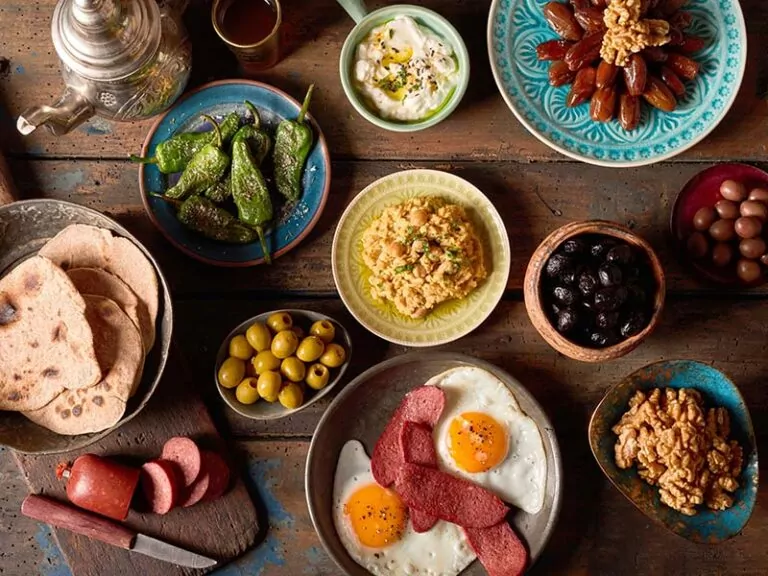African cooking techniques offer a unique window into the heart of the Mother Continent’s diverse cultures. These time-honored methods highlight the richness and variety that can’t be found elsewhere.
As you delve into this enticing realm, you’ll uncover the magic of African cuisine, learn fascinating ways of preparing food that transform simple ingredients into culinary masterpieces, and even find inspiration to shake up your cooking routine.
So, why not take a moment to explore? Understanding them can be the spark that ignites your next culinary creation!
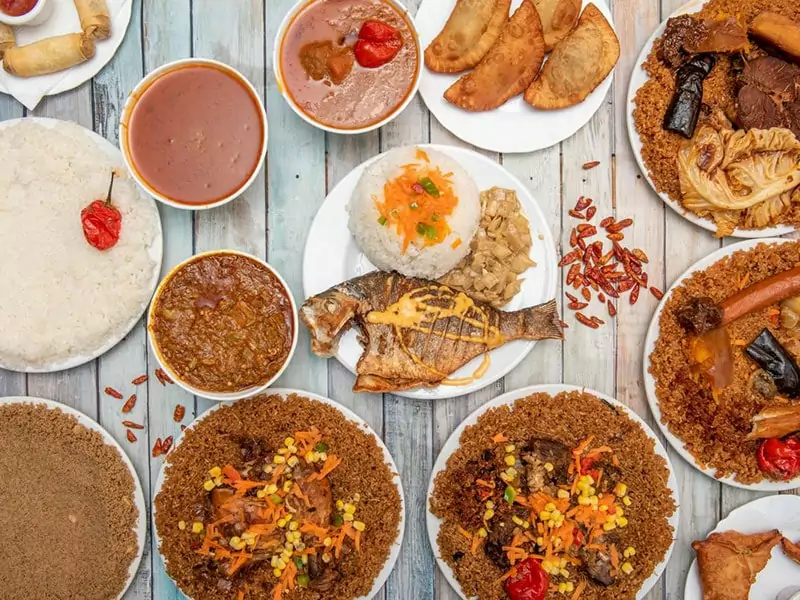
Key Takeaways
- Africa has many traditional cooking techniques, including open-fire cooking, steaming, boiling, grilling, braising, pounding, and grinding.
- Different African regions, such as Central, North, South, East, and West Africa, have distinct cooking methods influenced by their local culture and resources.
- Modern kitchen appliances like gas stoves, ovens, and electric grills are incorporated alongside traditional methods, blending old and new cooking techniques.
- Local ingredients in Africa, such as grains, meats, seafood, spices, and herbs, significantly shape the cooking techniques.
- African cooking focuses on preserving nutrients. However, some high-heat or long cooking techniques may cause nutrient loss. Healthier adaptations include using less oil and incorporating more vegetables.
- Many chefs reinterpret classic recipes using modern methods to honor tradition while embracing change.
Importance and Influence of African Cooking Techniques
Traditional African cooking methods demonstrate remarkable adaptability and resourcefulness. Take a look at fermentation, a technique that enhances flavor and prolongs shelf life. It is crucial in regions with limited refrigeration. Equally useful is the practice of smoking meat and fish.
Thanks to the African diaspora, African cooking techniques also exercise substantial influence globally. For example, the slow-cooking methods common in Southern American barbecue partly have roots in African culinary traditions. [1]
Today, as the world’s culinary scene shows greater interest in diverse flavors, African cooking techniques are receiving due recognition. Chefs have more freedom to incorporate traditional methods into their work.
Historical Background of African Cooking Techniques
With a rich history, African cooking techniques have been shaped with time and through exchanges with other cultures. Thanks to the Mediterranean influence in the North and Indian impact in the East, African cooking styles keep evolving.
Origin And Evolution
African cooking techniques have deep historical roots, with many dating back thousands of years. They originated from diverse ethnic communities across the continent.
For instance, North African cuisine shows the influence of Mediterranean cultures, with techniques such as slow cooking and couscous steaming. In contrast, the grilling techniques of sub-Saharan Africa reflect the pastoralist lifestyles of the communities there.
As societies evolved, so did their cooking techniques. Trade routes brought new ingredients and ideas that would change the food scene. Maize is a perfect example. African porridge staples like Ugali and Nshima were only possible with this vegetable of American origin.
Influences From Other Cultures
Interactions with other cultures have a significant effect on African cooking techniques. Arab traders brought spices and new cooking methods to North Africa, while Portuguese traders introduced new crops such as cassava and peanuts to West Africa.
At the same time, the influence of Indian cooking can also be visible in East African cuisine, like the enormous popularity of spices, coconut milk, and curries.
The Role In Traditional African Societies
Cooking techniques are often tied to social and cultural practices, such as communal cooking and eating. Certain techniques are also specific to important occasions, ceremonies, and festivals.
African Common Cooking Methods
Let’s immerse in the fascinating world of African cooking methods! These techniques, from roasting and steaming to stewing and fermenting, create countless dishes. They paint a vibrant culinary picture that is constantly evolving but still deeply anchored in age-old traditions.
1. Roasting
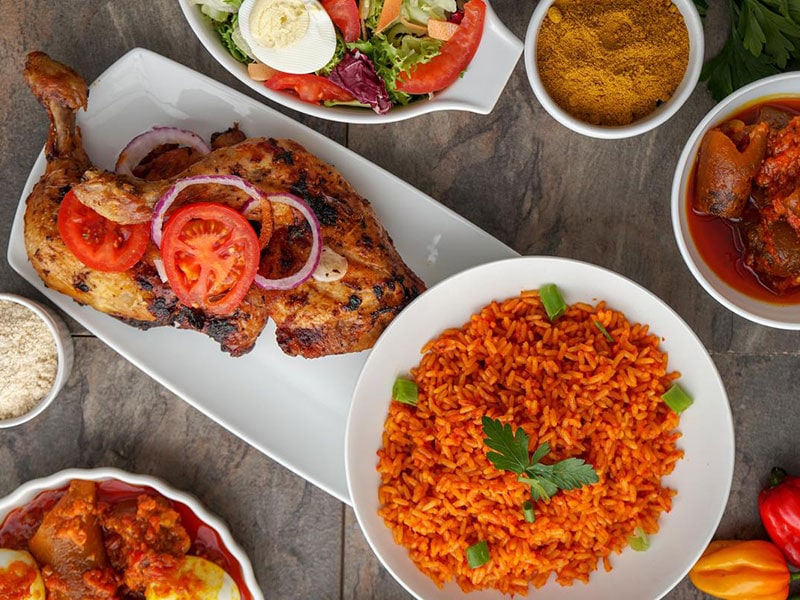
Roasting in Africa involves cooking food over an open flame without water. The roaring fire is pivotal in improving food quality, from the irresistible allure of meats and fish to the subtle sweetness of arrow roots, plantains, and root vegetables (like cassava and sweet potatoes).
And it’s not just about the savory food ingredients. In Kenya, coffee beans are also subjected to this open-fire dance. The longer they bask in the heat, the richer the coffee body it produces.
2. Steaming
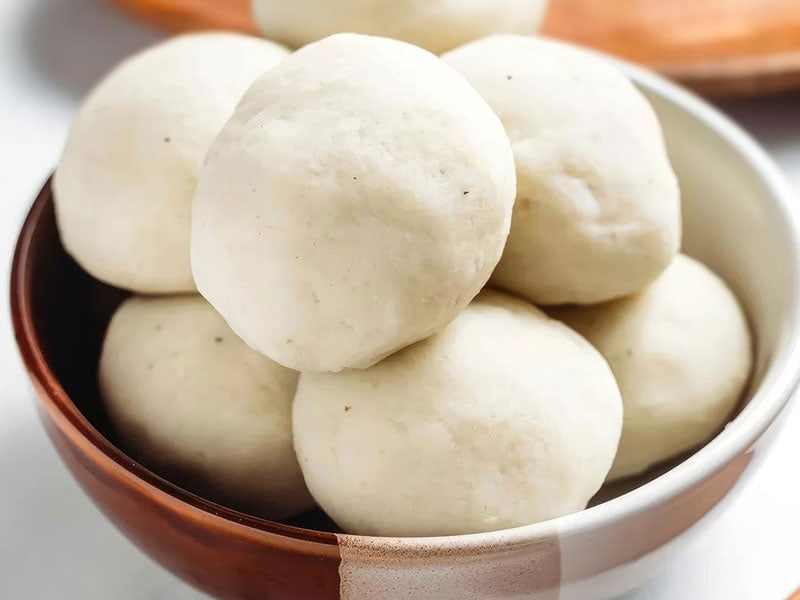
Steaming is a process in which water boils until it turns into vapor and cooks food without direct contact. Doing so ensures that moisture remains locked in, preserving the food’s nutritional value.
Matoke, a staple dish from Uganda, Tanzania, and Rwanda, is a perfect example of steaming. People prepare it by wrapping starchy bananas in banana leaves and placing them over boiling water, letting the hot vapor do all the work.
Similarly, North Africans cook couscous (tiny balls of semolina) through steaming. These semolina pearls are a special food item in Morocco, Algeria, Tunisia, and Libya.
3. Boiling
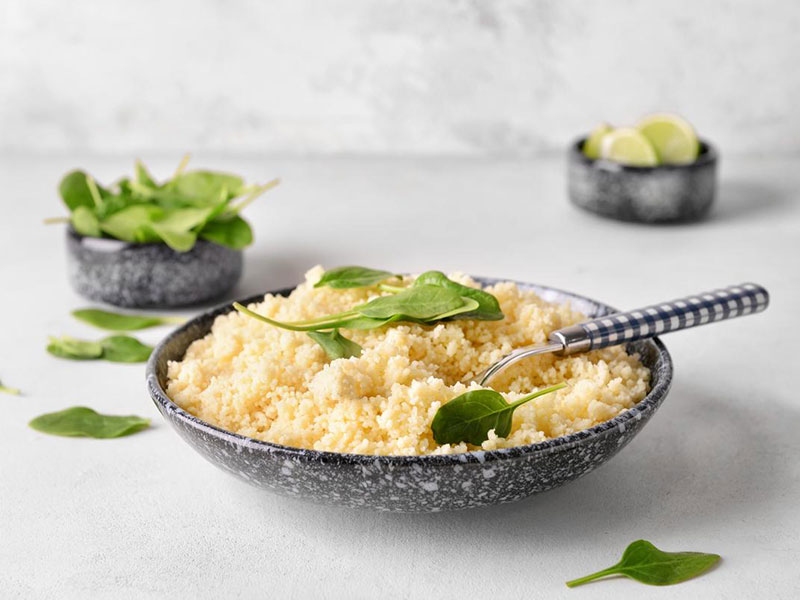
Boiling is a fundamental cooking method in Africa. It requires food to be immersed in heated water or broth. This method shines when it comes to preparing hearty soups and stews, as well as infusing beverages like tea and coffee.
Many African staple foods, such as yam, cassava, plantains, and potatoes, are cooked this way as a side for savory dishes. Locals also cook nutritious porridge with maize, millet, or sorghum this way.
And let’s not forget beverages: steeping tea leaves or tea bags in boiling water is a relaxation ritual. In addition, countless Ethiopians and Eritreans boil coffee with water in a traditional pot called Jebena.
4. Frying
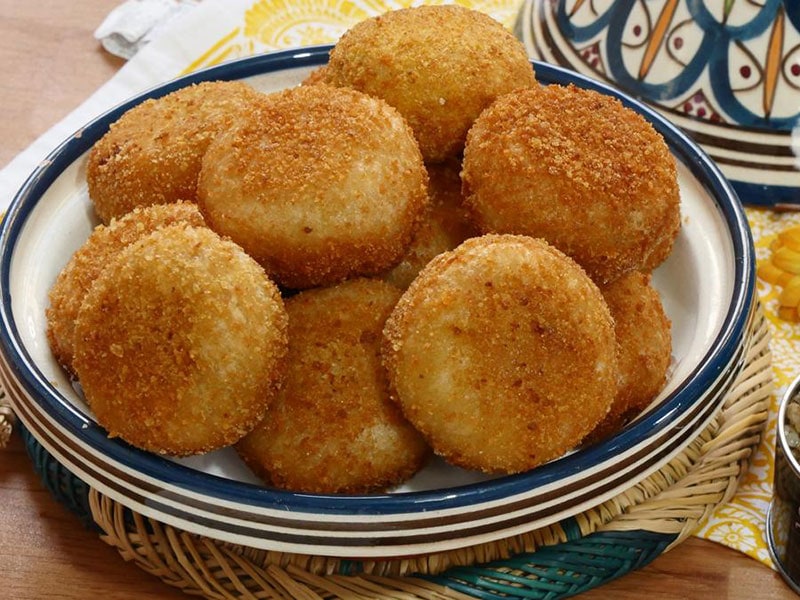
Frying involves cooking ingredients in a pan or skillet with cooking oil or fat. Depending on the method, the oil’s quantity and temperature vary. For example, deep-frying immerses food in hot oil until its exterior is crispy, like Akara (Nigerian bean fritters) and Puff-Puff (West African dough balls).
Meanwhile, pan-frying needs less oil and medium heat. It suits fried fish/ meat and Kelewele (spicy fried plantains). On the other hand, stir-frying combines a small amount of very hot oil with continuous stirring. It creates dishes like Jollof rice, a rich mix of tomatoes, onions, and spices.
5. Smoking

Smoking is a traditional method of cooking and preserving food. It has been popular in African cuisine since time immemorial. This technique is essential in areas where refrigeration isn’t possible.
It is often applied to foods like meat, poultry, or fish. People expose them to smoke from smoldering plant materials such as wood. The smoke imparts a distinctive flavor and aids in preservation.
Smoking is a common way to keep fish in West Africa. Smoked fish has found its way into numerous African soups and stews. Kilishi (Nigerian jerky) is another wonderful product of this technique.
6. Stewing
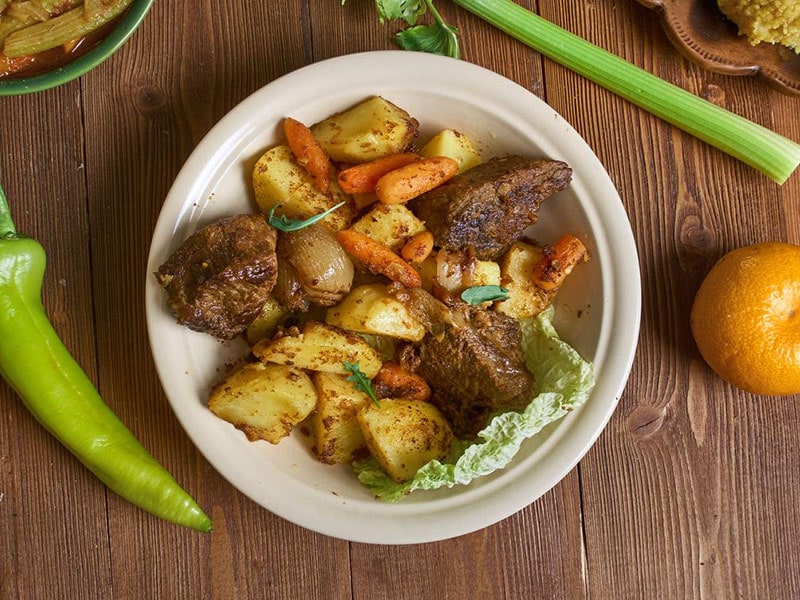
To stew is to slowly cook ingredients in a liquid over low heat. This method is excellent for allowing flavors to intertwine and for tenderizing ingredients like meat. It’s the secret behind many hearty and flavorful dishes, like meat and vegetable stews.
The list of tasty African stews is long. Still, I can immediately name a few: Egusi (Nigerian stew with ground egusi seeds), Maafe (West African peanut stew), and Kapenta Stew (a Zimbabwean dish with small fish).
7. Fermenting
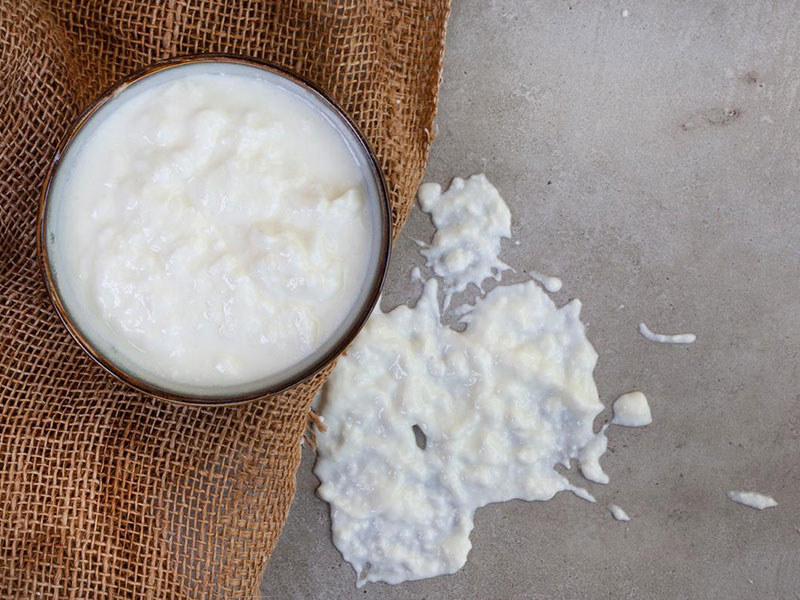
An iconic technique in African culinary traditions, fermentation harnesses the power of microorganisms to convert carbohydrates to alcohol or organic acids under anaerobic conditions. [2]
While Africans primarily use it with cereal-based foods like sorghum, millet, and maize, it also works wonders on roots, fruits, and vegetables.
The famous dish Fufu from West Africa results from fermenting cassava, yams, or plantains. Injera from Ethiopia and Eritrea is born of teff flour and water fermented for days. Another specialty is the Southern African fermented milk Amasi, a yogurt or sour cream cousin.
8. Grilling / Braai
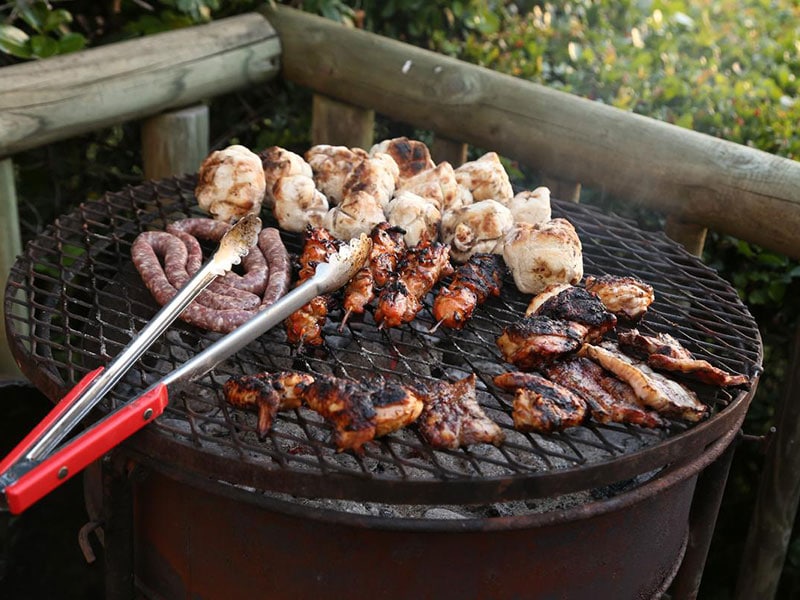
Braai comes from the Afrikaans term “braaivleis” for “grilled meat.” This cooking tradition holds a special place in South African culture. It can mean both the food and the occasion of cooking it, which is similar to BBQ but involves more social interactions.
More than a cooking method, a Braai is also a big event where loved ones huddle around a special metal or brick structure called a Braai stand. Charcoal or wood is the heart of this fire, contributing a unique smoky flavor to the food.
You’ll see a range of marinated ingredients sizzling on the grill, predominantly meat. Marinade ingredients include spices, hot sauce, lemon juice, oil, or sugar. Besides meat, there are different food choices, like Boerewors (South African sausage), Roosterkoek (grilled bread), etc.
There are many other grilling dishes outside South Africa, like Suya (a popular skewered meat street food in West Africa) and Piri Piri chicken (grilled chicken in Portuguese-speaking countries).
9. Braising
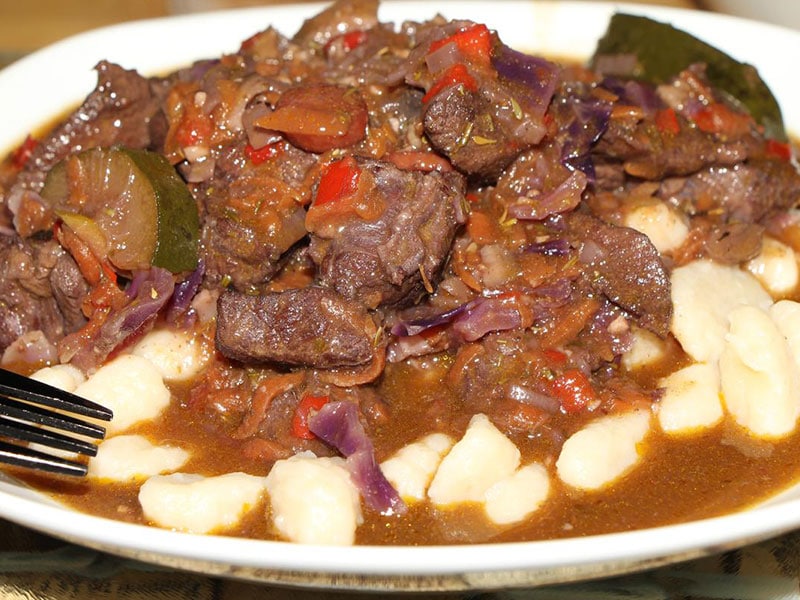
Braising is a two-step cooking method. It begins with a high-temperature sear before transitioning to a low simmer at low temperatures in a snugly covered pot with just a small amount of liquid.
This process is excellent at softening tough cuts of meat and combining flavors. Moroccan Tagine (a hearty meat stew) in North Africa and Ethiopian Doro Wat (a spiced chicken dish) in East Africa both celebrate braising in all its delicious glory.
10. Pounding / Grinding
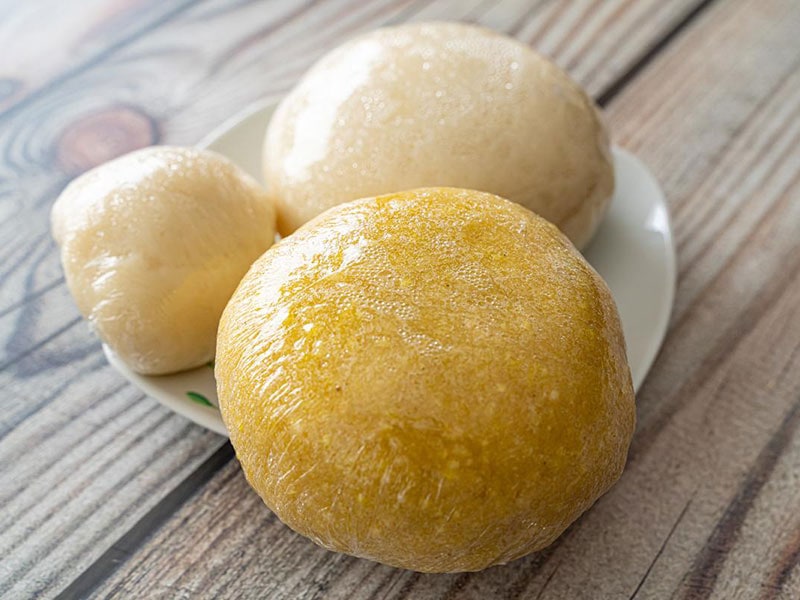
Pounding and grinding are deeply rooted in African culinary traditions. These techniques shape textures and blend flavors, enabling a cook to extract every bit of potential from ingredients like grains, nuts, seeds, and even spices.
These two techniques require the dynamic duo of a mortar and pestle. The mortar is a big bowl made from wood, stone, or clay, while the pestle is a stout, club-shaped tool. They join each other in a rhythmic dance of crushing and grinding.
While akin to pounding, grinding is a circular motion against the mortar walls that gives a finer texture. Both pounding and grinding may be needed to transform grains like millet, maize, or sorghum into fine flour or starchy vegetables (like yams) into a smooth paste.
11. Baking

Though a relatively new cooking method in Africa, baking has carved a niche in the local food scene. It has flourished under European influence and the advent of modern ovens, particularly in North Africa.
While bread, cakes, and pastries may be the best things to bake, African cuisine presents a more diverse picture. A case in point is the South African Bobotie, an inviting combo of spiced minced meat baked with an egg-based topping.
In North Africa, the baked round flatbread known as Khobz reigns supreme. It is prepared daily in homes across Morocco, Algeria, and Tunisia.
Cooking Techniques In Different African Regions
Isn’t it fascinating how cooking techniques differ across regions? For instance, Central Africa leans towards boiling and stewing, while grilling takes center stage in North Africa.
Diving Southwards, Braai reigns supreme there, whereas East Africa is fond of grilling and stewing, like West Africa, which also enjoys frying. Now, ready to dive deeper into the culinary habits of these African regions?
Central Africa
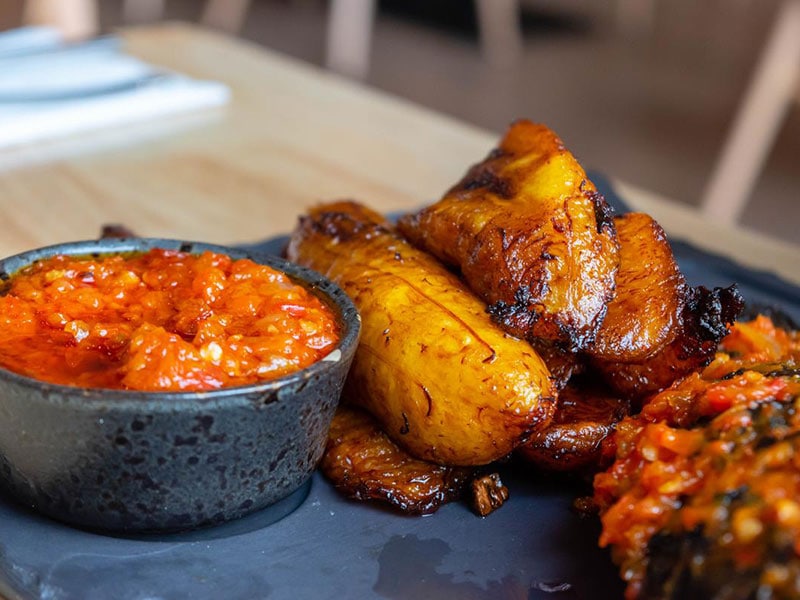
Staple ingredients like cassava, plantains, and yams characterize Central African specialties. The cuisine heavily incorporates bushmeat and freshwater fish. Boiling and stewing are necessary to create thick sauces and soups. Root vegetables are typically mashed or pounded.
North Africa
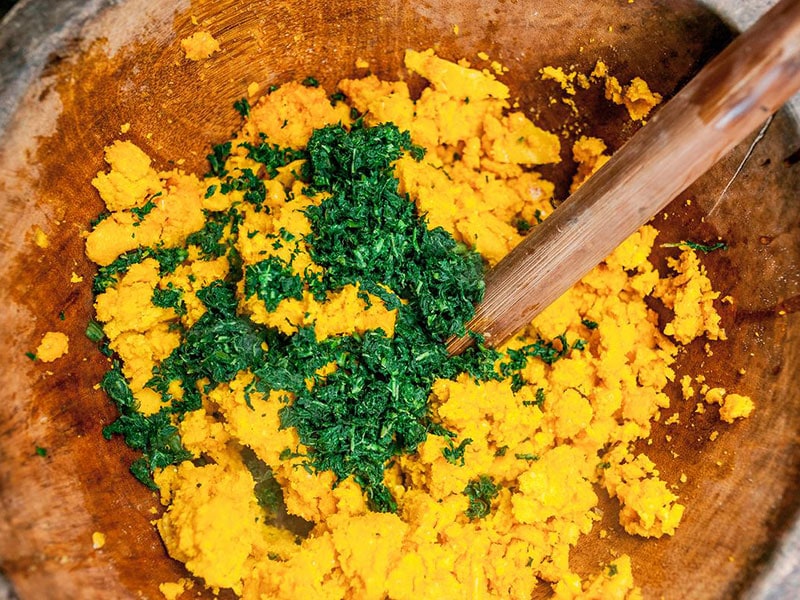
In this region, cooking techniques often revolve around using spices like cumin, nutmeg, coriander, and saffron. The famous North African staples are couscous, flatbreads, and slow-cooked meats prepared in tagines or clay pots.
Grilling meats (as in kebabs) and preparing stews with legumes and vegetables are common.
South Africa
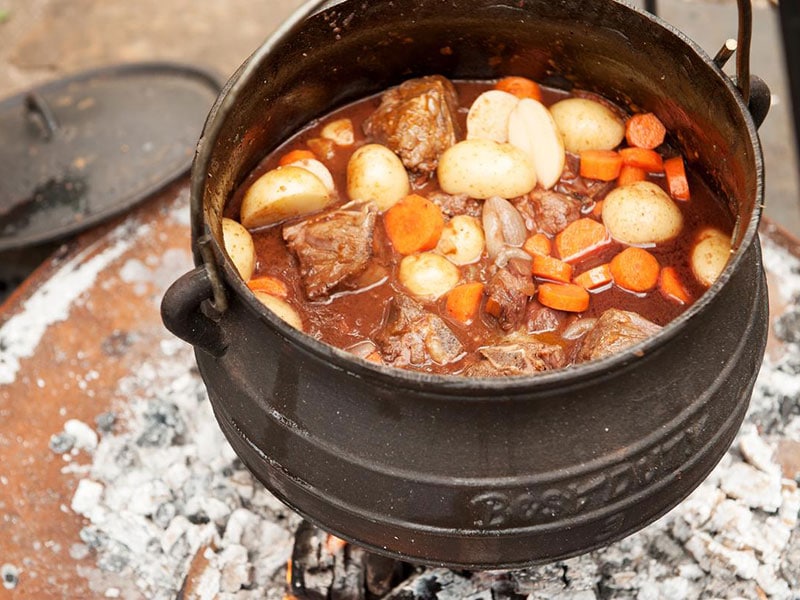
When talking about South African cuisine, I must mention the blend of indigenous and colonial influences. Popular techniques include Braai (barbecuing), stewing, and baking.
Famous dishes are potjiekos (a traditional meat and vegetable stew), Bobotie (spiced minced meat with an egg-based topping), and Bunny Chow (hollowed-out bread filled with minced meat).
East Africa
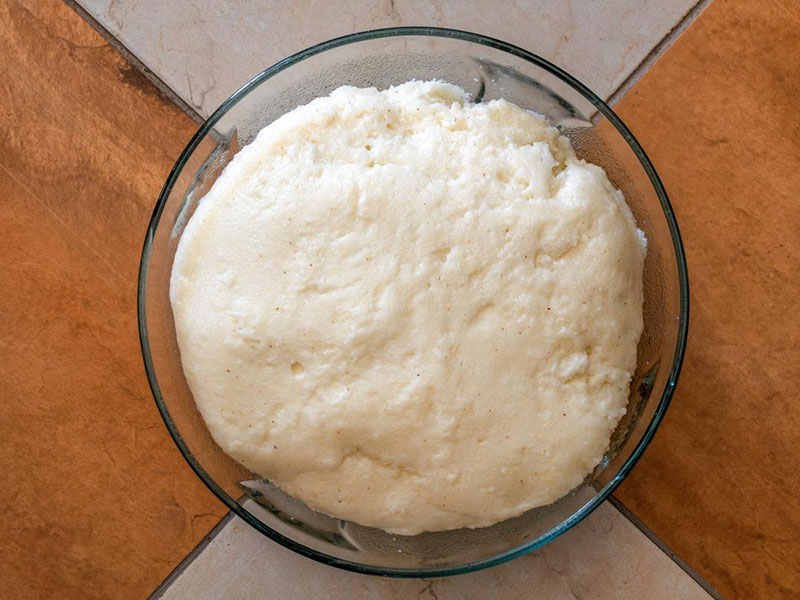
Regarding all East African delicacies, cooking techniques involve using grains (like maize and millet), plantains, beans, spices, and coconut milk. Ugali (a maize meal porridge) is a staple; meats are often grilled or stewed. Seafood is prominent in coastal areas.
West Africa
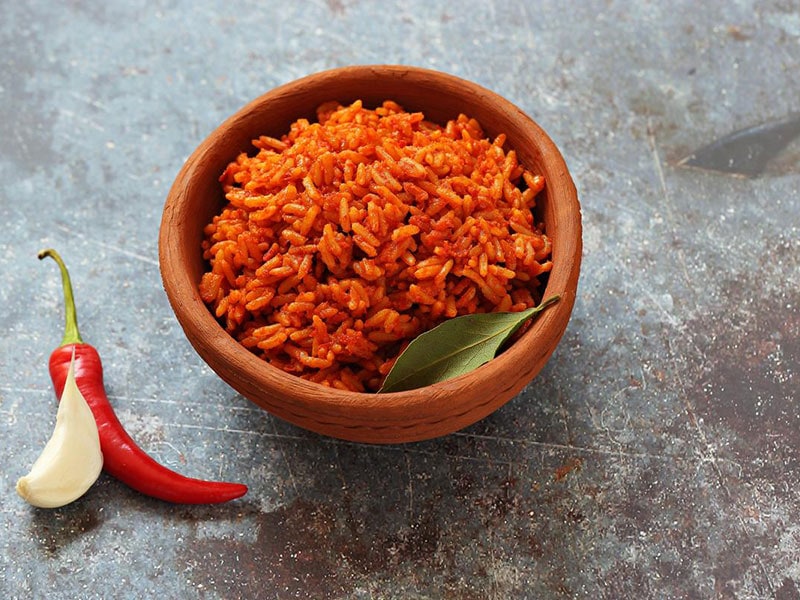
There are many techniques in the West African cooking scene, such as frying, grilling, and stewing. Staple ingredients include rice, yams, cassava, and legumes.
Jollof rice is a popular dish, and soups and stews are often made with groundnuts or palm nuts. The use of hot peppers and spices is also characteristic of this region.
Influence of Local Ingredients on Cooking Techniques
Have you ever wondered about the connection between local ingredients and cooking techniques? In Africa, local products like meats and seafood shape its culinary practices. Moreover, regional spices and herbs also affect the cooking preparation.
Indigenous Fruits, Vegetables, Grains, And Legumes
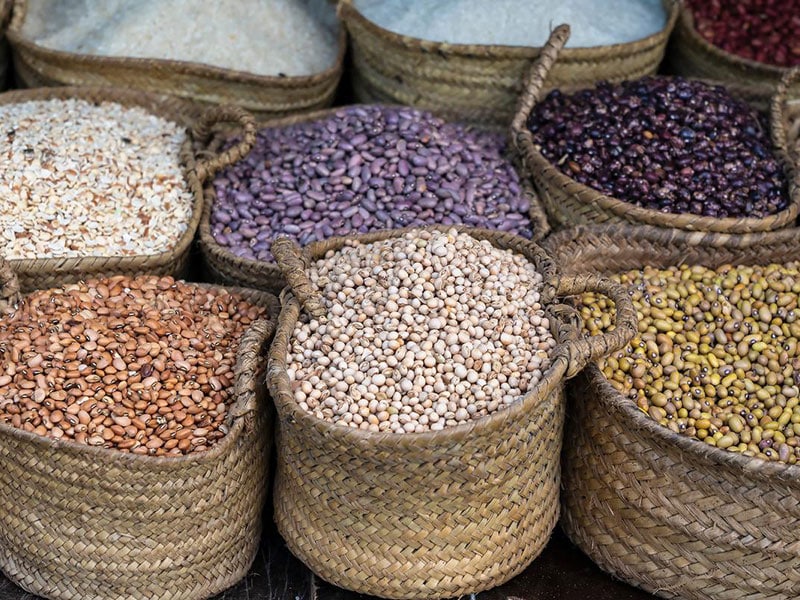
Many local cooking techniques are dependent on Africa-native fruits and vegetables, besides grains or legumes. For instance, the consumption of staple foods like cassava, yams, millet, and sorghum has led to techniques such as pounding, boiling, and fermenting.
Use Of Locally Available Meats And Seafood

In coastal regions, abundant fish and seafood lead to grilling, smoking, and drying techniques. In pastoralist communities, livestock rearing has given rise to methods like roasting and boiling.
The traditional South African technique of making Biltong, a type of dried, cured meat, is a perfect example of a method arising from local resource availability.
Regional Spices And Herbs
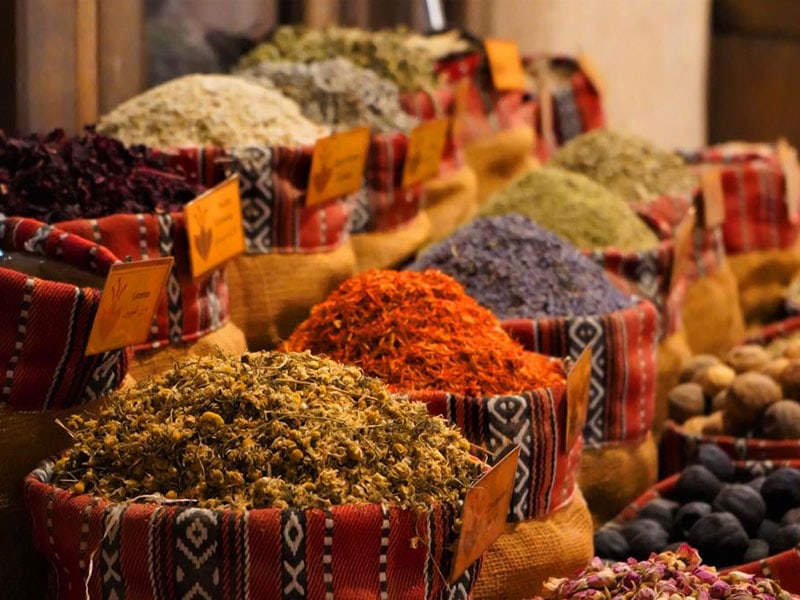
The blending and grinding spices, a technique common in North African cuisines, is integral to creating flavorful dishes like tagines. In West Africa, the preparation of soups and stews through simmering and stewing has to consider locally sourced herbs and spices.
Traditional vs. Modern African Cooking Techniques
How African cuisine intertwines age-old cooking methods with modern technology will fascinate you! From open-fire cooking and pit roasting to gas stoves and pressure cookers, local chefs are innovating, breathing new life into traditional recipes with contemporary methods.
Changes And Adaptations Over Time
While traditional methods like open-fire cooking and pit roasting are still prevalent, modern kitchen appliances like gas stoves, ovens, and electric grills have become common.
This blend of old and new techniques contributes to the dynamic nature of African cuisine, allowing it to retain its traditional flavors while adapting to contemporary tastes and lifestyles.
Influence Of Technology And Modern Appliances
Modern technology has brought about significant changes in African cooking techniques. For instance, appliances like pressure cookers and slow cookers have made it easier and quicker to prepare dishes that traditionally required hours of slow cooking.
Similarly, refrigeration has impacted food preservation techniques, reducing the need for traditional methods like smoking and drying. However, these traditional methods still hold cultural importance and are relevant for their unique flavor profiles.
Intersection Of Tradition And Innovation In Contemporary African Cuisine
Many chefs are revisiting traditional recipes and reinterpreting them using modern cooking methods. This has led to an exciting culinary movement that honors tradition while embracing change.
Health Implications of African Cooking Techniques
Regarding African cooking techniques, they’re designed to preserve nutrients, especially steaming and fermenting. But some practices may raise health concerns, like nutrient loss or excessive use of oil. Still, healthier adaptations are on the rise, promising a nutritional balance.
Nutritional Benefits
African cooking techniques often emphasize the preservation of nutrients in the cooking process. Techniques such as steaming, fermenting, and grilling help retain the nutritional value of food. Meanwhile, using fresh, local ingredients in African cooking also ensures a high nutritional content.
Potential Health Concerns
While many African cooking techniques have health benefits, there are also potential health concerns. Some methods involve high heat or lengthy cooking times, which can lead to nutrient loss.
Additionally, techniques such as deep frying or excessive use of oil and salt could contribute to health problems like obesity and hypertension if not handled well.
Strategies For Healthier Adaptations
Strategies for healthier adaptations of traditional cooking techniques are gaining momentum in Africa. This includes using less oil in frying, using locally sourced ingredients, incorporating more vegetables in stews and soups, or choosing grilling over deep-frying.
FAQs
From Fire To Feast: African Cooking Techniques Unveiled
With its vibrant patchwork of cultures, Africa presents an endless array of fantastic cooking techniques. From the simplicity of pounding and grinding to the gentle artistry of braising, they vividly picture Africa’s diverse food scene.
I hope you’re as captivated by these techniques as I am. Feel like sharing your love for African cooking? Hit that like button, share this piece with your friends, and don’t forget to drop a comment below!
References
- Vaughn, D. (2015) How southern barbecue got to Texas, Texas Monthly.
- Libretexts (2022) 17.5a: Fermented foods, Biology LibreTexts.

